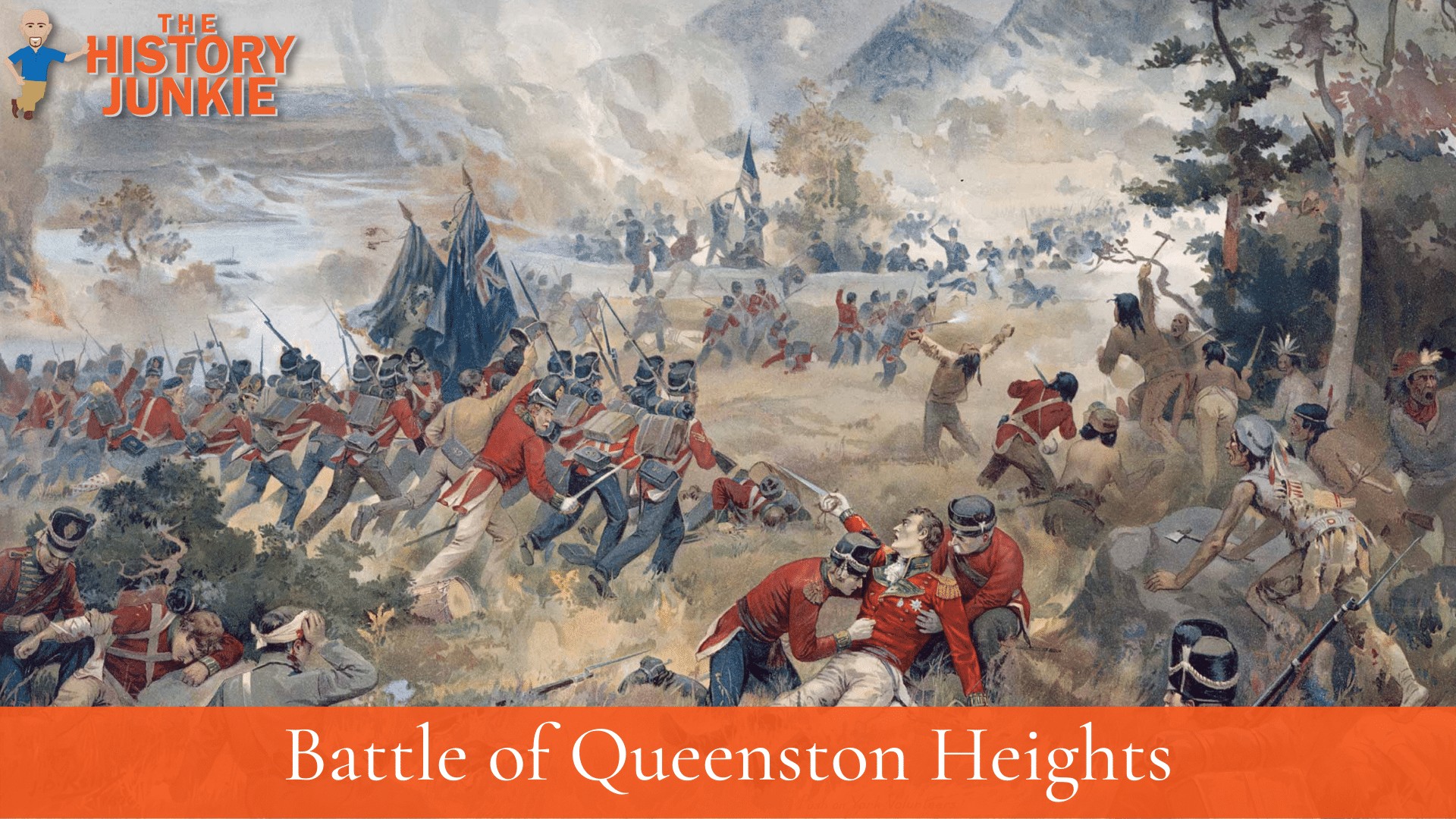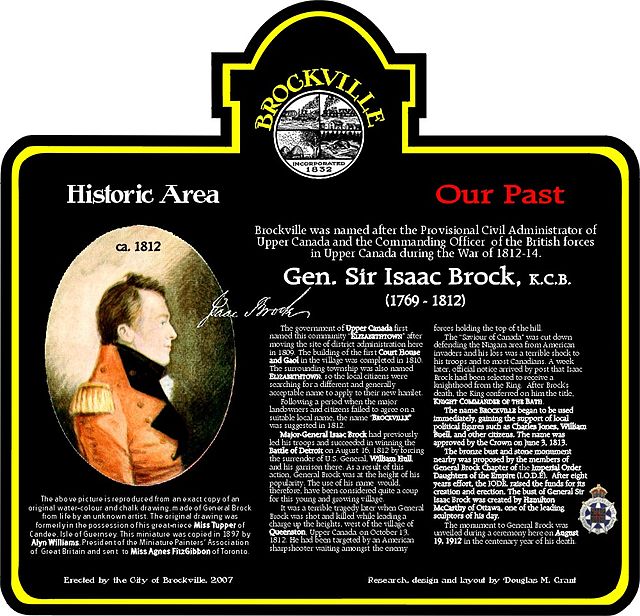The Battle of Queenston Heights was the first major battle in the War of 1812 and resulted in a British victory.

It took place on October 13, 1812, near Queenston in Upper Canada (the present-day province of Ontario).
It was fought between United States regulars and New York militia forces led by Major General Stephen Van Rensselaer, British forces, and Canadian militia led by Major General Isaac Brock and Major General Roger Sheaffe, who took command when Brock was killed.
The battle, the largest in the war to that point, was fought as the result of an American attempt to establish a foothold on the Canadian side of the Niagara River before campaigning ended with the onset of winter.
This decisive battle was the result of a poorly managed American campaign and may be most historically significant for the loss of the British commander.
Despite their numerical advantage and the wide dispersal of British forces against an invasion attempt, the Americans, who were stationed in Lewiston, New York, were unable to get the bulk of their invasion force across the Niagara River due to the work of British artillery and reluctance on the part of the under-trained and inexperienced American militia.
As a result, British reinforcements were able to arrive and force those Americans on the Canadian side to surrender.
American's Gain Control
The American leadership was still reeling from their loss of Detroit, as were many other settlers on the frontier. The Native Americans had been emboldened, and it seemed as if they held the momentum.
However, pressure from Washington was applied on General Stephen Can Rensselaer to invade Canada. A victory would hopefully boost morale for the war in the American public.
On October 12, the New York militia began an invasion at Queenston. The invasion was so poorly organized that the British did not take it seriously, as they believed the Americans would invade further down the Niagara.
The initial invasion stalled, but since the British believed the to be a feint, Van Rensselaer attempted another crossing on October 13, which succeeded.
The Americans surprised the British and seized a clifftop gun. This shifted the control of the battle to the Americans.
General Isaac Brock, who a day later did not believe the Americans would cross into Queenston, was surprised and quickly organized his troops. He personally led the charge to take control of the gun atop the cliff from the Americans.
He rode in the lead of his troops and was exposed to American snipers who unloaded on him and killed him instantly.

The British, Canadians, and Natives Push Back
With General Brock dead, his assistant, Colonel John MacDonell, regrouped the men and led another assault on the Americans. He would also be mortally wounded and taken out of action by the Americans.
During these assaults, General Roger Hale Sheaffe began to methodically climb the heights out of the sight of the Americans. This included a regiment of black soldiers.
Despite their advantage and manpower, the Americans could not break through due to the skillful and courageous fighting of the Mohawks and Delaware tribes led by John Norton and John Brant.
The Canadian Encyclopedia gives an excellent description of Norton's actions:
Norton had made the brilliant tactical decision to climb the escarpment at a considerable distance along the road west of Queenston, an easier climb than the one attempted by Brock closer to the Niagara River. The woods on the right flank of the American force, moving westward along the heights, provided perfect cover for Norton and his warriors as they pinned down the enemy’s advance until Major-General Sheaffe and his troops arrived.
When Sheaffe's men appeared, the American militia, as it had done so many times, fled or refused to participate, and the result was disastrous.

The Americans who showed much promise at the beginning of the assault were now waving the white flag in surrender. Nearly 1,000 Americans were taken prisoner, and 300 were killed or wounded.
The British losses were minimal in number. However, the loss of Isaac Brock would prove to be significant during the War of 1812 as Sheaffe, despite his brilliant effort at Queenston Heights, would not be able to generate the same respect from Tecumseh or the Native Americans that Brock had. His cautious approach would also lead to disaster at the Battle of York.
